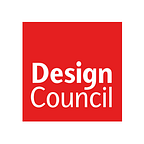How can we use AR to design a future eco-city?
We caught up with Jai Sandhu, Design Lead and Co-Founder of Wild Streets, an augmented reality app for citizens and professionals combining scientific data with high-quality 3D models of trees, plants and street furniture — allowing anyone to co-design the green, inclusive cities of tomorrow.
What was the inspiration behind the idea?
Climate scientist and communicator Johan Rockström has a phrase which really resonates with me of ‘crisis to opportunity’. It echoes the call to regenerative thinking, flipping a problem on it’s head and seeing how it can become a unique positive. Not just reducing the severity of a problem, but making the outcome actively good, as opposed to just less bad.
We know that cities are the origin of 70% of our carbon emissions (from heating, cooling, transport), because 85% of the population live in those conditions. This can be highly detrimental to our mental and physical health, disconnecting us from the planet we live on. Most cities were not designed from the outset, they were iterative, building up the concrete jungles we see today.
In the midst of the climate emergency, biodiversity crisis and epidemic of loneliness, we took the opportunity to think about how cities could be redesigned to respond to these problems and created Wild Streets.
Tell us more about the augmented reality (AR) element of the app.
What Wild Streets will allow us to do, as a tool, is to easily create, in real-time through AR, visions of potential futures and step into them, inviting others to experience that too. From a phone you will be able to drag-and-drop photorealistic 3D trees, plants and street furniture into the space you’re standing in using AR.
You’ll be able to choose from species which will thrive in your location, and see estimates for the ecosystem service value your design delivers. In a moment, anyone, of any expertise level can make a design with compelling imagery and the numbers to back it up — sharing it with friends, councils and designers. We’ve also developed interactions that will allow you to show how your design will look in different seasons and show how it will develop over time for future generations.
We very much see Wild Streets as becoming a standard plugin for CAD software (2D and 3D computer-aided design software often used by architects, mechanics, inventors, engineers and designers) as a data-enabled tool to design in four dimensions (space and time). It should become a natural extension of any design process, keeping it human-centered but with the planet at the heart of it.
What are some of the main challenges in building Wild Streets?
Our greatest challenge has actually not been developing the technology, it’s been raising investment. By inventing something new, we recognize that it can feel like a risk to invest in, but it’s one we’re hoping people overcome. The UK’s new Biodiversity Net Gain legislation is mandating that the baseline for green space quality is improved by at least 10% for any building project and we know that Wild Streets could be a game-changer in this; making what could have been frustration into fun by creating a collaborative and stimulating process of design thinking.
What are the aspirations for the company?
One of the main challenges we come across is changing the mindset: adapting the cities we have into the ones they could be. For example, we know that trees are always a popular choice for creating a more eco-centric city, the UK office for National Statistic estimates that the ‘cooling shade of urban trees saved £248 million in 2017 alone, and 27,000 lives were saved through vegetation removing air pollution’. However, the problem can come in the fact that opinions can differ in the way in which we use our streets, so where do we place those trees?
We aspire for Wild Streets to be the tool that gives everyone a voice in the design process, using people’s first hand knowledge and local expertise, it will allow scalable co-design thinking on any project. By giving a team the space to collectively step into the future together having already found their consensus and lessened risk by increasing participation, Wild Streets will provide a sense of ownership leading to the motivation to make change happen.
We want to accelerate the big green transition to low carbon cities, but do it in a way that is considered and will improve over time. We can make cities places we absolutely thrive, our natural habitat — a cross between the buzz of the cities we love, and the nurturing counterpart we run to wild places to be in.
What does design mean to you?
Design to me is solving problems which at first seem intractable, but with creativity and non-obvious solutions can be made into an opportunity. It has the power to bring together many disciplines without ever being constrained by how things are usually done.
Something well designed is shown by something that works in context, not just on paper, whatever the real and unpredictable world throws at it. In changing times, with more urgent problems than ever, design is exactly the tool for the job.
If you’re interested in supporting Wild Streets you can find out more on their website.
